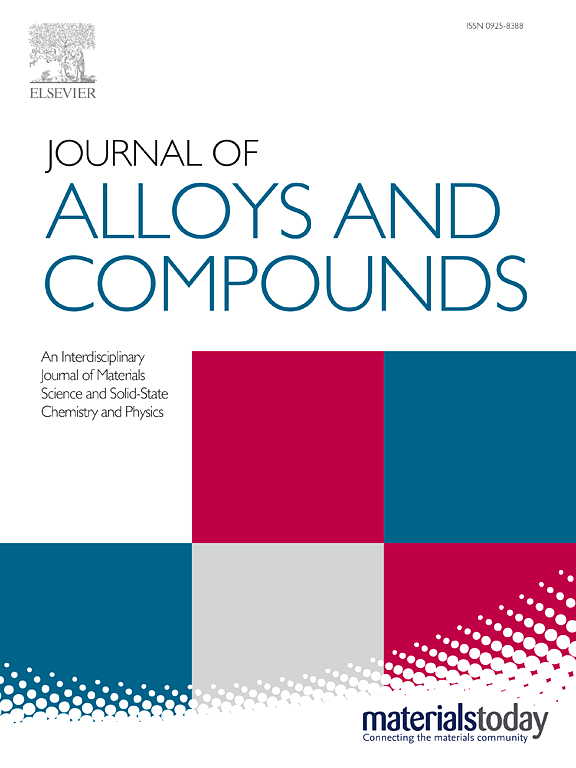Loading-direction dependence of non-basal slip activity in a pre-twinned AZ31 magnesium alloy
IF 5.8
2区 材料科学
Q2 CHEMISTRY, PHYSICAL
引用次数: 0
Abstract
In Mg alloys, basal 〈a〉 dislocation slip is the preferential slip system that is activated at room temperature, while non-basal slips are typically difficult to activate owing to their high critical resolved shear stress. Until now, minimal focus has been directed towards the influence of loading direction on slip behavior in pre-twinned AZ31 (Mg-3Al-1Zn-0.3Mn, wt%) Mg alloys. This study employed transmission electron microscopy to demonstrate that non-basal 〈a〉 slips, specifically prismatic and pyramidal I slips, are activated under deformation conditions where de-twinning is difficult in a pre-twinned AZ31 Mg alloy. When the tensile loading direction is parallel to the precompression direction, de-twinning and basal 〈a〉 slip are the primary deformation modes. Conversely, when the tensile loading direction is perpendicular to the precompression direction, where de-twinning is challenging to activate, both basal 〈a〉 and non-basal 〈a〉 slips, such as prismatic and pyramidal I slips, emerge as the primary deformation modes. These results indicate that the pre-twinned AZ31 Mg alloy cannot deform solely through basal 〈a〉 slips, and the activation of either de-twinning or non-basal 〈a〉 slips is necessary to satisfy the von Mises criterion. Our findings in this study demonstrate the impact of non-basal slip activity on macroscopic yield stress and overall deformation, hence enhancing the understanding of magnesium alloy deformation mechanisms.

预孪晶AZ31镁合金非基滑移活性的加载方向依赖性
在镁合金中,基底< a >位错滑移是在室温下激活的优先滑移系统,而非基底滑移由于其较高的临界分解剪应力而通常难以激活。到目前为止,很少有人关注加载方向对预孪晶AZ31 (Mg- 3al - 1zn -0.3 mn, wt%)镁合金滑移行为的影响。本研究采用透射电子显微镜证明,非基底< a >滑移,特别是棱柱形和锥体I滑移,在变形条件下被激活,而在预孪晶AZ31镁合金中去孪晶是困难的。当拉伸加载方向与预压方向平行时,去孪生和基底< a >滑移是主要的变形模式。相反,当拉伸加载方向垂直于预压缩方向时,很难激活去孪生,基底< a >卡瓦和非基底< a >卡瓦,如棱柱形卡瓦和锥体I卡瓦,都是主要的变形模式。这些结果表明,预孪晶AZ31镁合金不能仅仅通过基体< a >卡瓦来变形,而去孪晶卡瓦或非基体< a >卡瓦的激活是满足von Mises准则所必需的。我们的研究结果证明了非基面滑移活动对宏观屈服应力和整体变形的影响,从而增强了对镁合金变形机制的理解。
本文章由计算机程序翻译,如有差异,请以英文原文为准。
求助全文
约1分钟内获得全文
求助全文
来源期刊

Journal of Alloys and Compounds
工程技术-材料科学:综合
CiteScore
11.10
自引率
14.50%
发文量
5146
审稿时长
67 days
期刊介绍:
The Journal of Alloys and Compounds is intended to serve as an international medium for the publication of work on solid materials comprising compounds as well as alloys. Its great strength lies in the diversity of discipline which it encompasses, drawing together results from materials science, solid-state chemistry and physics.
 求助内容:
求助内容: 应助结果提醒方式:
应助结果提醒方式:


